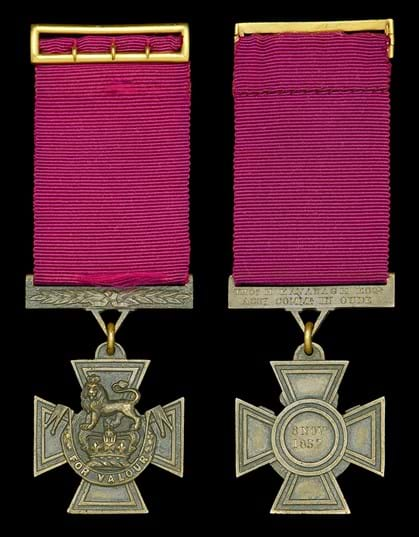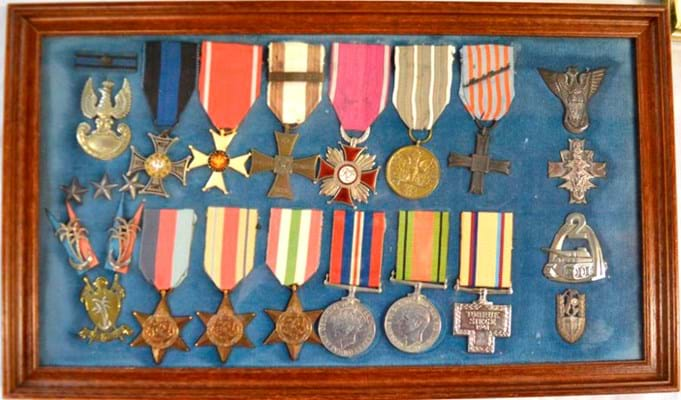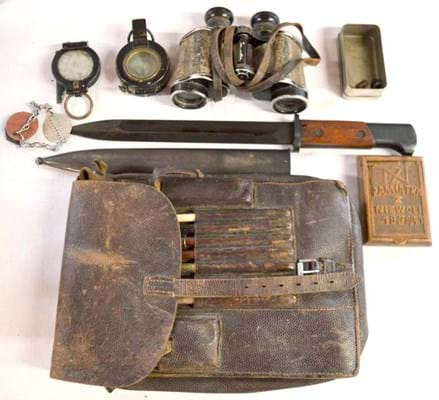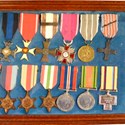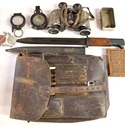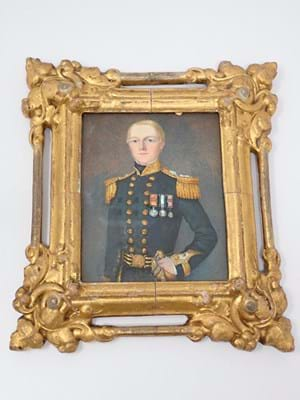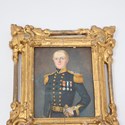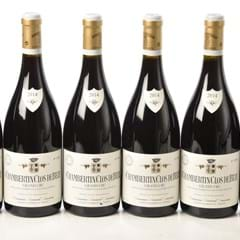A beginner's guide to buying medals and medallions
Whether gallantry medals or campaign honours, full groups or individual items, the medals and medallions market can offer a wide range of fascinating collecting options.
The first civilian Victoria Cross of just five to be awarded has sold for an auction record hammer price of £750,000 at London saleroom Noonans in September 2022. Estimated at £300,000-400,000 on September 14, the Indian Mutiny ‘Siege of Lucknow’ VC awarded to Irishman Thomas Henry Kavanagh was bought by a collector for £930,000 once buyer’s premium is added. It beat the previous top VC sum – for military or civilian recipients – of £700,000 (or £840,000 with premium) set at fellow London auction house Morton & Eden in 2017.
Bringing a wealth of intriguing stories from Rorke’s Drift to the heroics of civilians in the Blitz, campaign medals and gallantry medals are one of the most instantly accessible of collecting fields.
British awards and decorations are available in two major categories: campaign medals and gallantry medals.
Campaign medals are awarded to members of the British armed forces, Allied forces and civilians participating in specified military campaigns. More than 80 different medals have been issued since the first (the Peninsular Gold Medal) was awarded to officers in 1810, with five new medals already awarded in the 21st century.
Gallantry medals recognise personal accomplishments by members of the British armed forces or acts of civilian bravery - each one with a remarkable story of heroism.
What do people collect?
Collectors typically focus on medals issued by their own country. In the UK the selection is huge. The Napoleonic, Crimean and Boer Wars, the Indian campaigns followed by the First World War and ensuing major 20th century British armed conflicts (18 different campaign medals were issued in the Second World War alone) divide the collecting field.
There are those who focus on certain regiments, specific military campaigns and even single decorations of the highest order, such as the Victoria Cross.
Rarities are always prized (short-lived campaigns with comparatively few combatants, such as the Falklands conflict, tend to mean fewer medals) while additional bars (especially those for a well-known engagement or battle) can boost demand.
The comparatively recent move to scrap distinctions between awards made to officers and other ranks has also limited the availability of some medals. One example of this is the Distinguished Flying Medal, the other ranks' equivalent of the Distinguished Flying Cross. Established in 1918 and discontinued in 1993, these were awarded in such small numbers after the Second World War that they have become highly sought after.
The CGC (Conspicuous Gallantry Cross) is another good example.
It was once highly controversial for recipients to sell their own medals, but in the past five years or so it has become more common, with heroes of Afghanistan and Iraq, among others, putting their awards up for sale to raise money.
Again these have rarity value, either because they are newly created awards or because so few are for sale. (When in September 2010, Private Paul Darren Wilmott sold the CGC he had won just three years earlier for outstanding bravery in action against the Taliban, only 30 had ever been awarded. It took £42,000 at Bosleys of Marlow. Ones sold more recently have hit the six-figure mark).
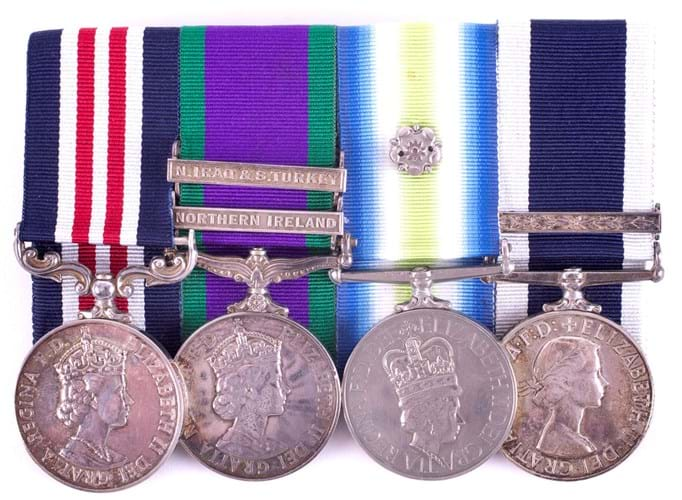
The Falklands War medals of Corporal Michael Eccles sold for £82,000 at Plymouth Auction Rooms in October 2022. The Battle of Mount Harriet on June 12, 1982, was an intense night attack spearheaded by ‘K’ Company, 42 Commando, Royal Marines. Eccles led his men under fierce machine gun and rocket fire to the Argentine position, overrunning them and securing the critical high ground over Port Stanley. He was awarded the Military Medal – one of only 10 issued during the conflict and one of four issued to 42 Commando.
Civilian awards
Outside the military, acts of civilian bravery attract a plethora of medals, the highest ranking being the George Cross (effectively the equivalent to the military's Victoria Cross) instituted in 1940 to recognise the role of non-combatants on the Home front during the Blitz. In this field, it is very much the association of the particular medal which dominates pricing.
Civilian honours are typically associated with life saving outside the military sphere, such as mine disaster and rescue from drowning, or plague relief operations. Another popular option are the medals given for Polar exploration.
Recent GC and George Medal results have shown how much demand now exists for the top levels of such awards.
However, at a lower price level plenty of good options are available such as the Albert Medals.
If you really want to buy something very different you could even try the ‘Victoria Cross’ for animals: the PDSA Dickin Medal. The example awarded to Rob, a black-and-white collie-retriever who served with paratroops and the SAS, sold for a world record £140,000 at the Noonans auction in October 2012.
The market
In general terms, what makes a medal worth just a few pounds or a six-figure sum is much the same as objects in other collecting fields: rarity, provenance and condition.
Design is much less important and it is not often that the materials from which they are made have any intrinsic worth - the Victoria Cross, for example, is traditionally thought to be cast in gunmetal from Russian cannon captured at the siege of Sevastopol.
Within these general parameters, however, there is a huge spectrum of factors to consider from the level of gallantry of the recipient, the fame of an action or campaign and the status of the individual concerned. Medals are typically sold in groups, and the combination of decorations can add to their rarity and attraction.
Waterloo medals offer an excellent summary of the sorts of factors that can affect price. It was the first such medal created since the one issued by Cromwell for the Battle of Dunbar in 1650. It was given to all participating soldiers and a total of 39,000 were awarded in 1816-17 - so they are not exactly rare as a whole.
An honour given to someone who served in one of the regiments in the heat of the action, such as the Guards, and particularly to a senior officer, will gain value.

South Africa Medal with Zulu War clasp awarded to Pte Robert Adams of the 24th Foot, who died at the defence of Rorke’s Drift – £58,000 at Spink in April 2022.
Where to buy/what to buy
London supports a wealth of auction houses and dealers, with large volumes of medals changing hands on a regular basis.
At auction, Noonans, Spink and Morton & Eden are big players in the London auction market.
The current state of the market is illustrated by the number of auction houses outside the capital holding specialist sales or even setting up separate medals departments.
Outside London the picture is particularly healthy these days, with plenty of buying options at regional salerooms such as Lawrences of Crewkerne, Bosleys, Woolley & Wallis, Wallis & Wallis and C&T to name just a handful, with many of these firms holding dedicated sales where medals are offered alongside wider militaria and arms and armour.

While the First World War Victoria Cross awarded to Corporal James Upton, 1st Battalion, The Sherwood Foresters, is currently displayed at the Museum of the Mercian Regiment in Nottingham, a miniature version was offered along with his other honours at the Adam Partridge saleroom in February 2022. The group took £14,400.
Changing values
At the very top level, the dominance of Lord Ashcroft as the world's leading collector of Victoria Crosses has helped push up prices for some time. His extensive holding is now on display in a specially built wing of the Imperial War Museum.
While medals values have been steadily climbing, unlike other collecting fields, however, the nature of the medals world means that few collectors acquire pieces specifically with investment in mind. It comes as close as you can get to a purely academic and emotional field of collecting.
Those involved tend to have a serious interest in history, and owning a medal brings them that bit closer to the act of bravery and the individual it commemorates.
The internet has transformed the market from one typically dominated by ex-military types and enthusiasts concentrating on particular regiments and campaigns to one increasingly influenced by online research (aided by websites such as ancesrty.co.uk for instance).
This has led to a healthy influx of younger collectors looking more at the individual stories behind the medals themselves and varied the rationale for a collection - reasons to buy could include medals awarded to alumni of a noted school or sportsmen.
This reinforces another important factor when it comes to medals values: what is also included in a lot. Service records, ephemera such as uniforms and hats, photo albums, flying log books and so on will push up demand in a market where the individual stories and research opportunities are increasingly popular.
